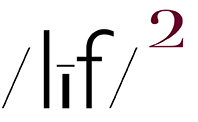I am finally back in the saddle after a 10 day hiatus which included a 3 day getaway, a 4 day hospital stay and a couple days of trying to feel like myself again. During that time, I received this notification:
I am very pleased to tell you that one of your images was selected for exhibition in our Middlebury, Vermont gallery. Congratulations! … I’d like to extend special congratulations to Juror’s Award recipient Kathleen Fischer and to Director’s Award recipient Atsuko Morita ... Congratulations also to three Honorable Mentions: Mark Hobson, Marilyn Maddison, and Kate Wnek.
I must admit that there is a degree of satisfaction which accompanies the fact that one of my pictures was selected for the exhibition, WATER, from amongst the nearly 3,000 submissions. Of the 35 pictures selected, it is also nice that my picture was called out with an Honorable Mention.
That written, I have previously written about the fact that, whoever the jurist(s) might be, their selections will be very subjective. My honorable mention picture might not even have made the cut into the exhibition with a different jurist on the case. And, to be honest, my honorable mention picture was a last minute addition to my 5 submissions and I did not consider it to be the pick of the litter. Lesson to be learned: one person's criteria is not another person's criteria.
In and event, re: the topic of criteria, I have been trying to adjust my criteria regarding the making of my pictures. That is, does a referent demanded a snapshot aesthetic approach or is it a "serious" picture making opportunity? And, perhaps more important, should I even care?
The primary consideration, re: "serious" v. snapshot designation, is that of which picture making tool to use in the making of a picture. "Serious" picture making would seem to call for a "serious" tool (aka: a "real" camera) whereas a snapshot not so much - in other words, a phone camera module. FYI, an aside ... I will confess that I feel that I am making a mountain out of a mole hill inasmuch as both tools produce very good image quality.
However, it's not the image quality I am concerned with. Rather, it is the picture making M.O. that I bring to the table when making a "serious" picture v a snapshot. To be precise, my "serious" picture making M.O. is oriented less to the referent and more to the visual structure-form v. content-of the picture. Whereas, in the case of a snapshot, I am much more oriented to the content than the form.
In addition to those considerations, I bring a more formal approach to "serious" picture making wheras with snapshot making I am more "loose" about framing and other technique notions. See the individual pictures in the feet in situ diptych above as an example.
What it all comes down to regarding determining whether a picture making opportunity calls for a "serious" or "loose" M.O. is that the tool I have in my hand actually does influence my picture making state of mind. A "real" camera in hand pushes me to a formal picture making mental state whereas an iPhone in my hand pushes me to a very "loose" picture making state of mind.

